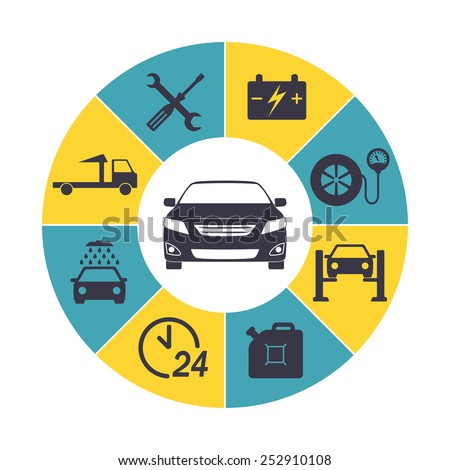Decoding Your Car'S Warning Indicators: What They Really Signify
Decoding Your Car'S Warning Indicators: What They Really Signify
Blog Article
Published By-Samuelsen Corbett
When you're behind the wheel, those glowing caution lights on your dashboard can be a little bit bewildering. Do you recognize what they're attempting to inform you regarding your cars and truck's health and wellness? Comprehending the value of these lights is vital for your security and the long life of your automobile. So, the following time one of those lights appears, wouldn't you intend to analyze its message precisely and take the essential steps to resolve it?
Common Caution Lighting and Interpretations
Identify common caution lights in your cars and truck and comprehend their significances to guarantee safe driving.
One of the most regular caution lights consist of the check engine light, which signals issues with the engine or emissions system. If this light comes on, it's essential to have your automobile checked quickly.
The oil pressure alerting light suggests reduced oil stress, calling for immediate interest to prevent engine damage.
A blinking battery light might suggest a malfunctioning billing system, potentially leaving you stranded otherwise addressed.
The tire pressure surveillance system (TPMS) light signals you to low tire stress, influencing automobile security and fuel performance. Neglecting this could bring about harmful driving conditions.
The ABS light shows an issue with the anti-lock stopping system, jeopardizing your capacity to stop rapidly in emergencies.
Lastly, commercial car cleaning alerting light warns of engine overheating, which can cause extreme damages otherwise dealt with swiftly.
Understanding these usual warning lights will certainly help you deal with problems without delay and keep safe driving conditions.
Value of Prompt Focus
Understanding the common caution lights in your auto is only the first step; the importance of immediately resolving these cautions can not be emphasized sufficient to guarantee your security on the road.
When a caution light brightens on your control panel, it's your auto's means of communicating a potential concern that needs attention. Ignoring these cautions can cause extra serious issues in the future, compromising your safety and possibly costing you much more in repairs.
Motivate attention to alerting lights can protect against malfunctions and accidents. For example, a blinking check engine light can show a misfire that, if left neglected, can cause damages to the catalytic converter. Addressing this promptly can save you from a pricey repair service.
Likewise, a brake system alerting light might signal reduced brake liquid or used brake pads, crucial parts for your security when driving.
Do It Yourself Troubleshooting Tips
If you see a caution light on your dashboard, there are a few DIY repairing tips you can try before looking for specialist help.
The initial step is to consult your car's guidebook to comprehend what the specific caution light suggests. Sometimes the problem can be as easy as a loosened gas cap causing the check engine light. Tightening up the gas cap might solve the problem.
Another common issue is a low battery, which can trigger various alerting lights. Checking the battery connections for deterioration and ensuring they're safe and secure might take care of the trouble.
If a caution light continues, you can attempt resetting it by detaching the automobile's battery for a few minutes and then reconnecting it. Additionally, examining your lorry's fluid degrees, such as oil, coolant, and brake liquid, can help troubleshoot warning lights associated with these systems.
Verdict
To conclude, recognizing your auto's caution lights is crucial for maintaining your lorry running efficiently and safely. By quickly resolving https://best-oil-change-near-me39506.creacionblog.com/31086640/discover-the-details-of-expert-auto-describing-enriched-by-the-special-insights-of-a-knowledgeable-specialist and recognizing what they mean, you can prevent costly fixings and prospective failures.
Bear in mind to consult your vehicle's handbook for specific information on each cautioning light and act appropriately to make certain a trouble-free driving experience.
Stay notified, stay secure when driving!
